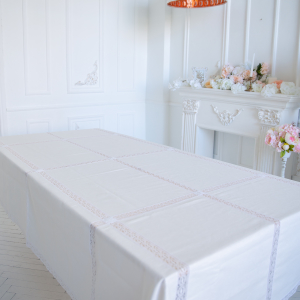CV-CK-0016 Льняная скатерть «Квадраты» 185x262см
9500 ₽
в наличии
- Описание
- English description
CV-CK-0016 Льняная скатерть «Квадраты» 185x262см
Льняная скатерть «Квадраты», украшенная хлопковым кружевом
Материал: отбеленный лен (50% лен 50% хлопок, 250 грм)
Размер 185x262см
Кружево 100% хлопок (4 см)
Please contact us for more information on any of our products
Consultation

